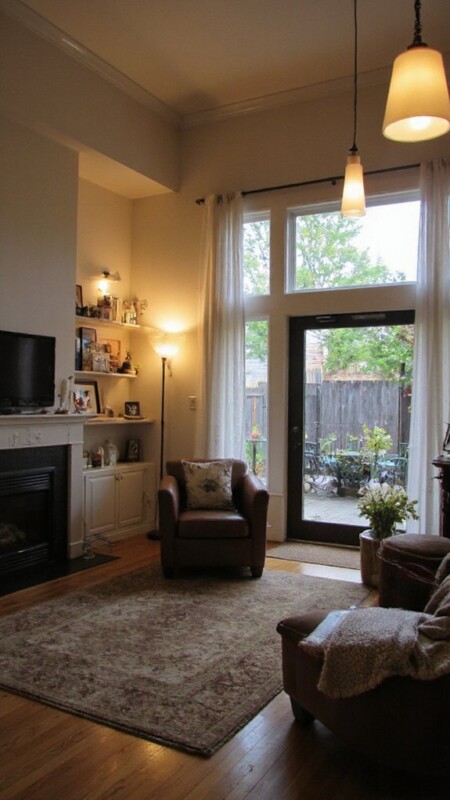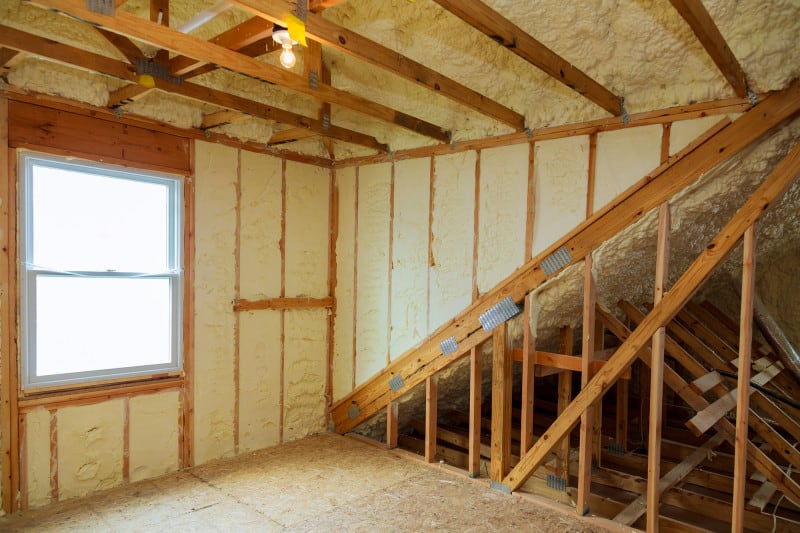Slash your power bill by switching to energy-efficient LED bulbs—they use up to 90% less energy than incandescents. Enhance daylight with larger windows, skylights, and reflective surfaces to cut artificial lighting hours. Upgrade to smart lighting controls and sensors to automate and improve usage, saving 35%–70% on lighting costs. Design your spaces with light-colored walls and strategic furniture placement for better light distribution. Investigate these methods further to reveal even more savings and efficiency.
Key Takeaways
- Switch to LED bulbs, which use up to 90% less energy and last much longer than traditional incandescent bulbs.
- Maximize natural light by keeping windows clean, using mirrors, and arranging furniture to avoid blocking sunlight.
- Install smart lighting controls or timers to ensure lights are only on when needed and prevent waste.
- Use occupancy sensors and daylight harvesting to automatically turn off or dim lights in empty or naturally bright rooms.
- Paint walls with light colors and design room layouts to reflect and distribute light efficiently, reducing the need for artificial lighting.
Switch to Energy-Efficient Bulbs
Although traditional incandescent bulbs have been standard for decades, switching to energy-efficient bulbs is one of the most effective ways to cut your power bill. You’ll find several energy efficient options, including LED, CFL, halogen, and smart bulbs.
LEDs use up to 90% less energy and can last 25 to 50 times longer than incandescent bulbs, maximizing bulb lifespan and minimizing replacements. Replacing just one 60-watt incandescent with a 9-watt LED can save roughly 50 kWh annually.
While LEDs cost more upfront, long-term savings quickly offset this investment. Smart bulbs further optimize consumption by allowing remote scheduling.
Maximize Natural Light in Your Home
Upgrading to energy-efficient bulbs cuts your electricity use, but you can drive costs down even further by enhancing natural light in your home.
Start by evaluating window placement—larger or strategically located windows, skylights, and glass doors greatly increase daylight entry. Consider installing solar tubes or transom windows to brighten hard-to-reach spaces.
Keep window surfaces clean and unobstructed to optimize light flow. Swap heavy drapes for sheer curtains and use adjustable blinds for controlled sunlight.
Incorporate reflective surfaces such as mirrors, metallic decor, or glossy finishes to bounce natural light deeper into each room. Painting walls a light color and maintaining white ceilings amplify this effect.
Ultimately, arrange your furniture to avoid blocking windows and choose transparent or reflective pieces, promoting the best light distribution.
Upgrade to Smart Lighting Controls
Smart lighting controls offer a powerful way to cut your power bill, delivering energy savings of 35% to 70% compared to conventional setups.
By upgrading to systems that use smart sensors, you ascertain lights are only active when they detect movement or occupancy, minimizing unnecessary energy use.
Integration with IoT platforms enables real-time monitoring, so you can adjust lighting output to match actual demand.
Remote control via mobile apps lets you switch off lights from anywhere, preventing wasted electricity if you forget.
Choose efficient LED bulbs for further savings, and look for ENERGY STAR certification to guarantee low power consumption.
Although initial costs are higher, the long-term reduction in operational expenses and environmental impact makes this investment both practical and sustainable.
Eliminate Lighting Waste With Automation
By automating your lighting systems, you can considerably cut down on wasted electricity and reduce your power bill. Occupancy sensors detect when rooms are empty and automatically switch off lights, saving up to 30% on lighting energy. Daylight harvesting uses sensors to measure available sunlight and dims artificial lighting accordingly, maximizing natural light and minimizing energy use. Scheduling lights with astronomic timeclocks guarantees they only operate when needed, while integration with HVAC and building management systems supports holistic energy savings. Below is a quick comparison:
| Feature | Benefit |
|---|---|
| Occupancy Sensors | Lights off in empty rooms, energy saved |
| Daylight Harvesting | Reduced artificial lighting during daylight |
| Automated Scheduling | Eliminates after-hours lighting waste |
Adopting these automated solutions delivers measurable cost reduction and aligns with energy efficiency standards.
Design Spaces for Optimal Lighting Efficiency
While automated controls eliminate much of the waste in lighting use, the efficiency of your lighting system ultimately begins with how you design your spaces.
To slash your power bill, focus on improving room layout and leveraging surface reflections. Start by maximizing daylight with large windows and skylights.
Cut your power bill by optimizing room layout and harnessing daylight through expansive windows and skylights.
Select light-colored paint for walls and ceilings to reflect light, reducing the need for artificial illumination.
Strategically position furniture to allow light to travel freely, minimizing shadowy zones.
Design lighting zones tailored to different activities and use focused task lighting where needed.
These principles not only cut energy costs but also improve visual comfort and sustainability.
- Maximize daylight with strategic window placement
- Use light-colored surfaces for best surface reflections
- Improve room layout to reduce fixture count
- Implement lighting zones for targeted control
- Prioritize task lighting over general illumination
Conclusion
By adopting these five lighting strategies, you’ll quickly see measurable savings on your power bill. Switching to energy-efficient bulbs and maximizing natural light alone can cut lighting costs by up to 75%. Smart controls and automation minimize waste, while thoughtful design guarantees you’re not over-lighting any space. Take these practical steps, monitor your usage, and you’ll realize both immediate and long-term energy savings—without sacrificing comfort or performance in your home’s lighting.


